The official flower of March is the daffodil, and while the cheery yellow bloom does appear in Paris’s gardens and florists throughout this first month of spring, there’s another flower that seems to capture the whimsical spirit of an early Parisian springtime so much more perfectly: a pink magnolia.

The magnolia is named after French botanist Pierre Magnol (1625-1715), an innovator in plant classification. It was another French botanist, Charles Plumier, who, in Martinique in 1703, named a species of flowering tree after his idol; ‘magnolia’ eventually became accepted as the genus name. Plumier, by the way, gave his own name to a genus: plumeria is another term for frangipani.
Let’s leave aside the politics of Enlightenment-Era Europeans stamping their names onto ancient flowers … What we can agree on is that the magnolia is heart-stirringly pretty.
There are two particularly gorgeous species of magnolia that make their mark in Paris in March.
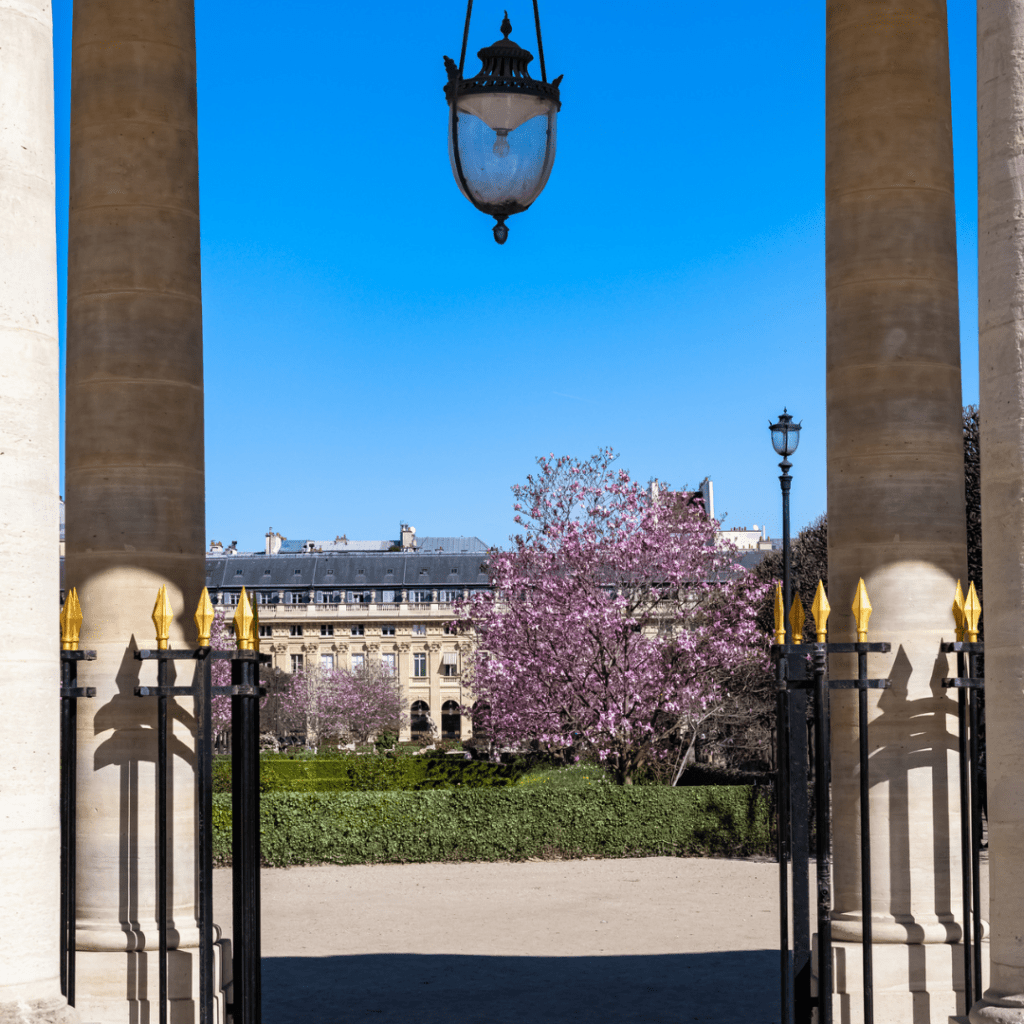
In the gardens of the Palais-Royal, sixteen large magnolia liliiflora burst into glorious shades of magenta and musk, their elliptic petals providing a gorgeous wistful contrast against the classic stone beauty of the Palais-Royal architecture and the severity of the clipped lime trees.
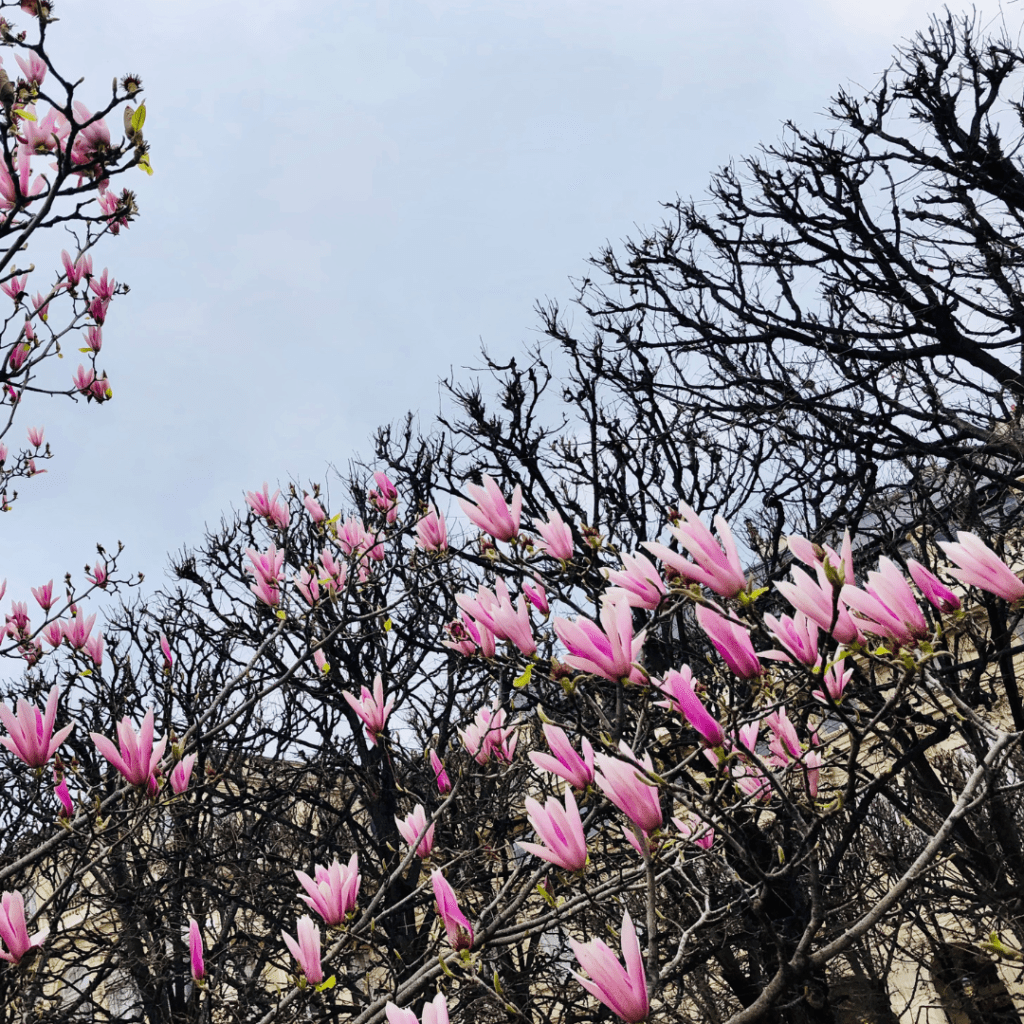
It’s not known when the magnolia liliiflora, native to southwest China, first came to France, but it has been a favourite ornamental for centuries.
If you want a little Palais-Royal prettiness in your own garden, a magnolia liliiflora would be a lovely choice. It’s well suited to city, cottage and courtyard gardens, and this low-maintenance plant can even thrive in a pot. Just make sure the soil is well-drained and neutral-to-acid, and that there’s plenty of sun, although partial shade should be fine, too. The magnolia liliiflora takes up to twenty years to reach its maximum height of around four metres.
For more magnolia inspiration, head a little south to the Jardin des Tuileries, where a few lone magnolias prove that this tree is just as effective as a feature on its own.
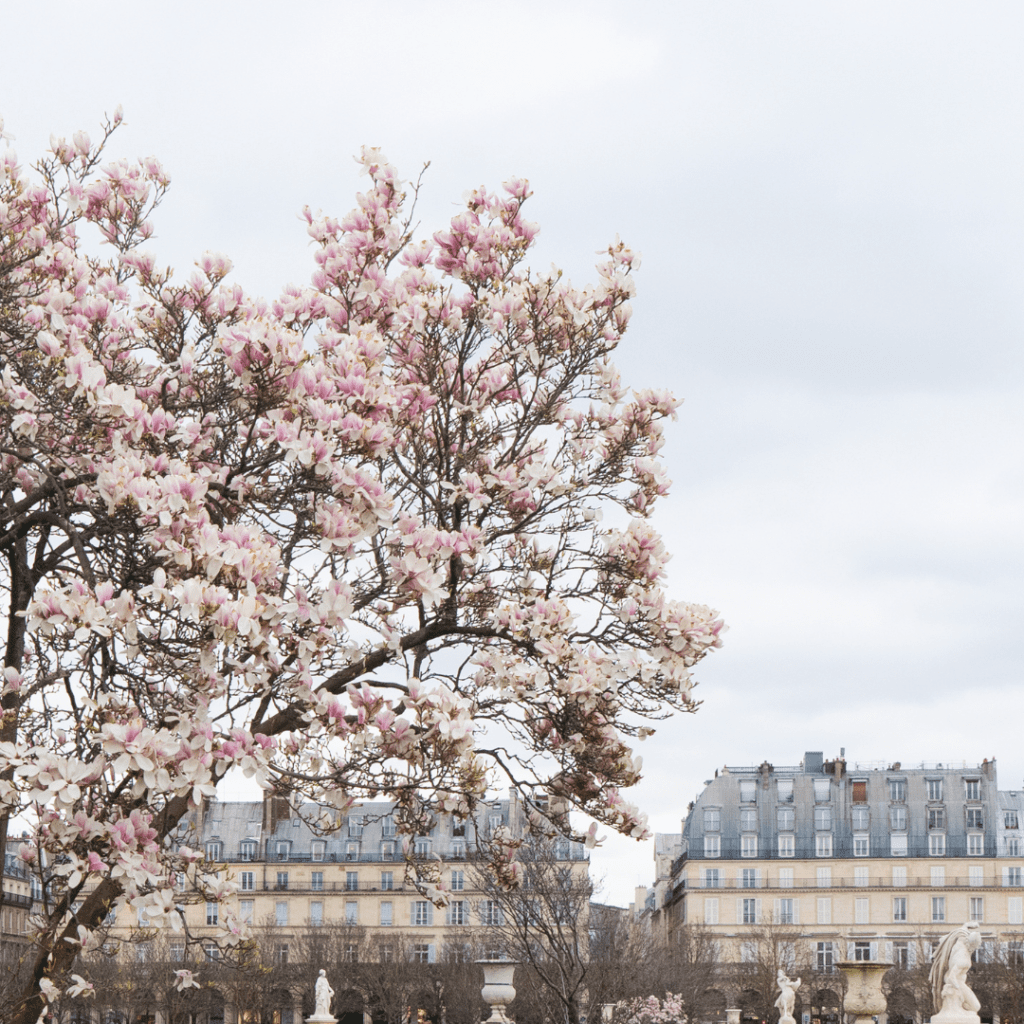
The particular species in this park is the magnolia soulangeana, commonly known as the saucer magnolia. It dates back to 1836 Paris, when Étienne Soulange-Bodin — superintendent of Empress Joséphine’s gardens at Malmaison and founder of the National Horticulture Society of France — cross-bred the magnolia liliiflora with the magnolia denudata, which has romantic tulip-shaped, ivory-white petals. The resulting saucer magnolia is one of the most beloved of the genus for its cup-and-saucer effect and its soft watercolour-like stripes of purple, pink and white.
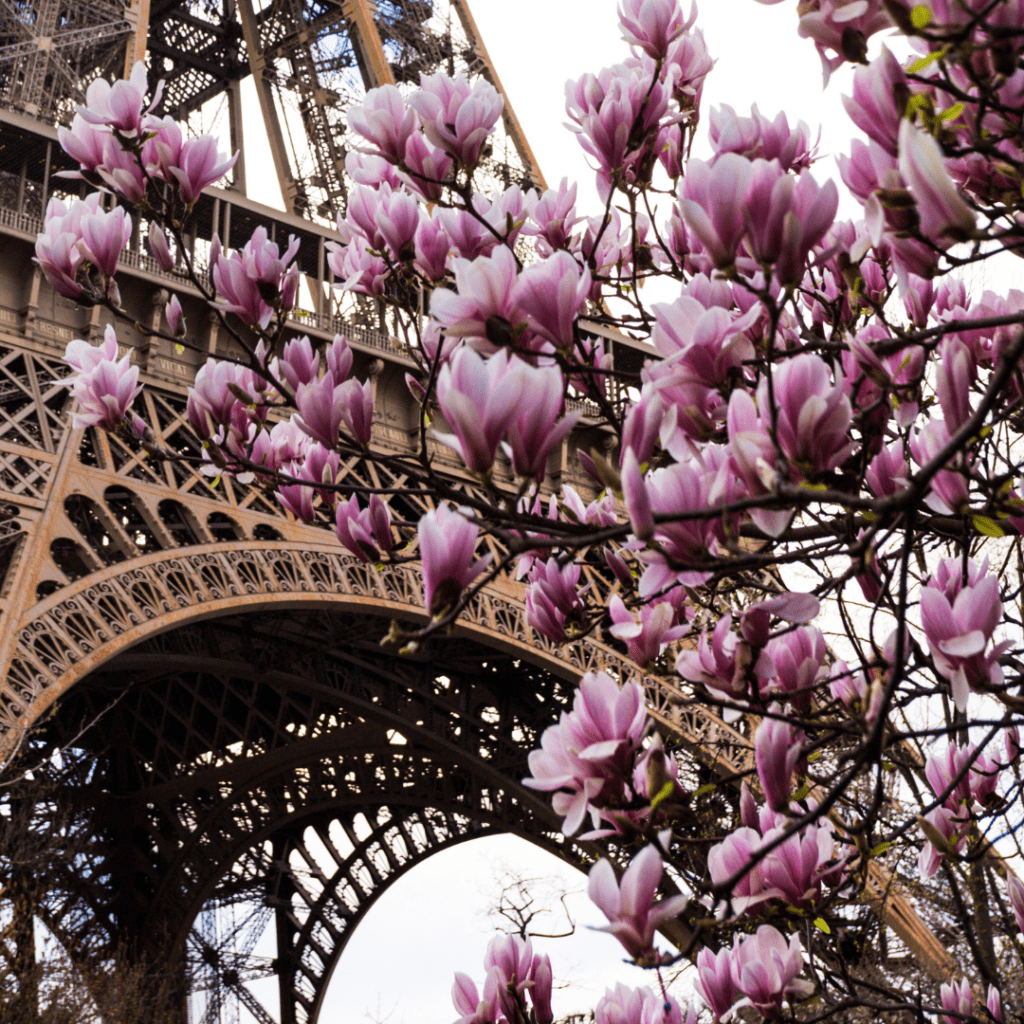
You’ll also find some beautiful saucer magnolias in the Champ de Mars, where the frothy prettiness of the tree’s flowers juxtaposes strikingly against the ironwork of the Eiffel Tower (above).
The magnolia soulangeana is an easy addition to any non-Parisian garden. Follow the tips outlined above for the magnolia liliiflora — just be aware that the saucer magnolia can grow up to eight metres in height.
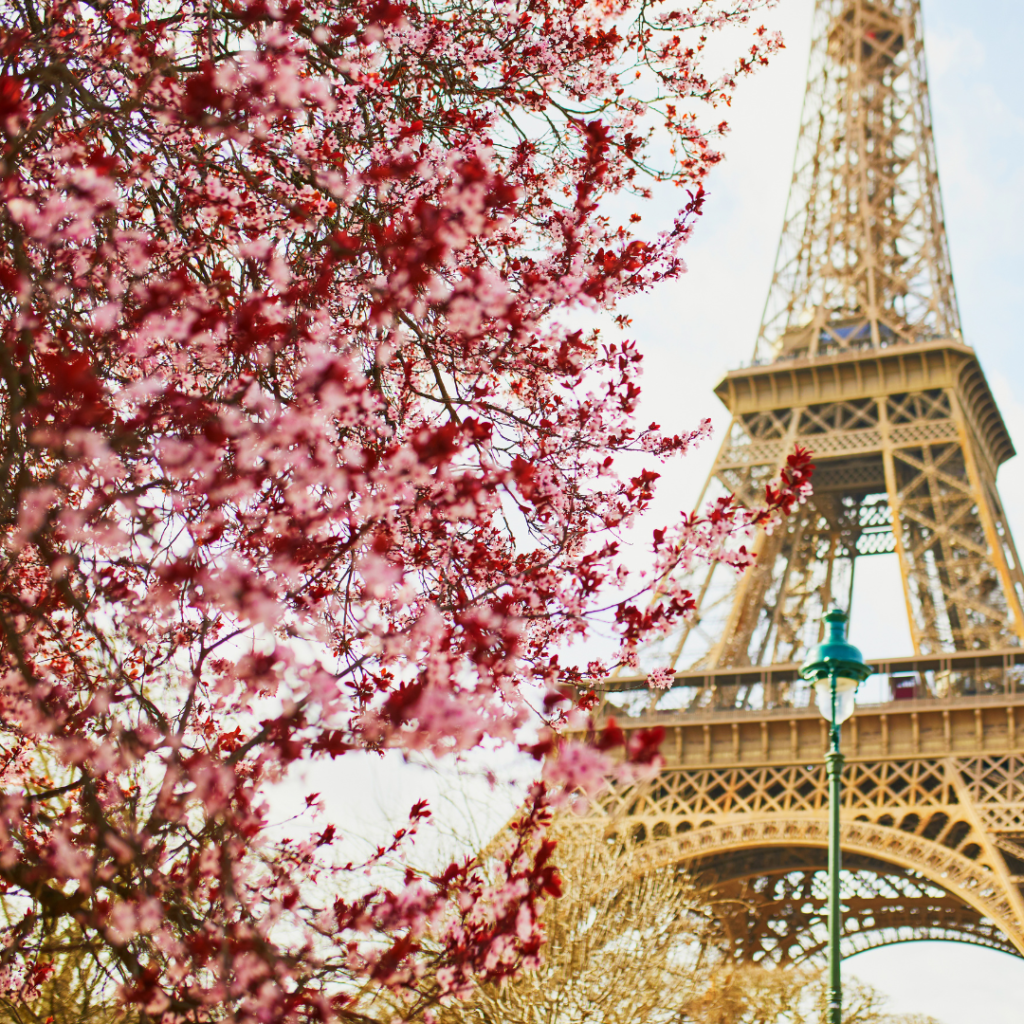
While you’re at the Champ de Mars, take the time to wander about this lovely garden for further springtime gardening inspiration. In March, the cherry plums (prunus cerasifera pissardii) are also in bloom (above), playing into the pink theme, while further into spring the lilacs and paulownias start to add pops of purple.

